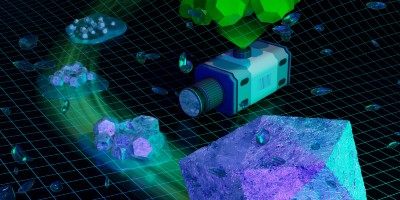Nd–Fe–B permanent magnets are essential for the transition to clean energy and mobility. Given the burgeoning demand for neodymium and other rare earths, we discuss the role of recycling and the need for government intervention in securing a sustainable rare-earth supply.
References
Goodenough, K. M. et al. Europe’s rare earth element resource potential: an overview of REE metallogenetic provinces and their geodynamic setting. Ore Geol. Rev. 72, 838–856 (2016).
Walton, A. et al. The use of hydrogen to separate and recycle neodymium-iron-boron-type magnets from electronic waste. J. Clean. Prod. 104, 236–241 (2015).
Zakotnik, M. et al. Possible methods of recycling NdFeB-type sintered magnets using the HD/degassing process. J. Alloys Compd. 450, 525–531 (2008).
Yang, Y. et al. REE recovery from end-of-Life Nd-Fe-B permanent magnet scrap: a critical review. J. Sustain. Metall. 3, 122–149 (2017).
Binnemans, K. et al. Recycling of rare earths: a critical review. J. Clean. Prod. 51, 1–22 (2013).
Binnemans, K. et al. Rare earths and the balance problem: how to deal with changing markets? J. Sustain. Metall. 4, 126–146 (2018).
Graedel, T. E. et al. Recycling rates of metals — a status report, a report of the working group on the global metal flows to the international resource panel (UNEP, 2011).
Balomenos, P. et al. The EURARE project: development of a sustainable exploitation scheme for Europe’s rare earth ore deposits. Johnson Matthey Technol. Rev. 61, 142–153 (2017).
Sprecher, B. et al. Life cycle inventory of the production of rare earths and the subsequent production of Nd-Fe-B rare earth permanent magnets. Environ. Sci. Technol. 48, 3951–3958 (2014).
Bailey, G. et al. Review and new life cycle assessment for rare earth production from bastnäsite, ion adsorption clays and lateritic monazite. Resour. Conserv. Recycl. 155, 104675 (2020).
Author information
Authors and Affiliations
Contributions
The authors contributed equally to all aspects of the article.
Corresponding author
Ethics declarations
Competing interests
The authors declare no competing interests.
Additional information
Publisher’s note
Springer Nature remains neutral with regard to jurisdictional claims in published maps and institutional affiliations.
Related links
China has only 37% of the world’s total REE reserves: https://www.usgs.gov/centers/nmic/mineral-commodity-summaries
EU-funded Horizon 2020 SUSMAGPRO project: https://www.susmagpro.eu/
European Raw Materials Alliance: https://erma.eu/
Important projects of common European interest: https://eur-lex.europa.eu/legal-content/EN/TXT/PDF/?uri=CELEX:52014XC0620(01)&from=EN
The USA announced in February 2021: https://www.globaltimes.cn/page/202102/1214738.shtml
The USA is taking measures to try to reduce its reliance on Chinese raw materials: https://www.reuters.com/article/us-usa-rareearths-lynas-corp-idUSKBN29Q30O
This group of metals is considered the most critical of raw materials: https://ec.europa.eu/docsroom/documents/42849
Rights and permissions
About this article
Cite this article
Binnemans, K., McGuiness, P. & Jones, P.T. Rare-earth recycling needs market intervention. Nat Rev Mater 6, 459–461 (2021). https://doi.org/10.1038/s41578-021-00308-w
Published:
Issue Date:
DOI: https://doi.org/10.1038/s41578-021-00308-w
- Springer Nature Limited
This article is cited by
-
Regional rare-earth element supply and demand balanced with circular economy strategies
Nature Geoscience (2024)
-
Novel devices for the extraction and recovery of rare-earth metals through recycling of waste
Journal of Material Cycles and Waste Management (2024)
-
Opportunities in Critical Rare Earth Metal Recycling Value Chains for Economic Growth with Sustainable Technological Innovations
Circular Economy and Sustainability (2023)


